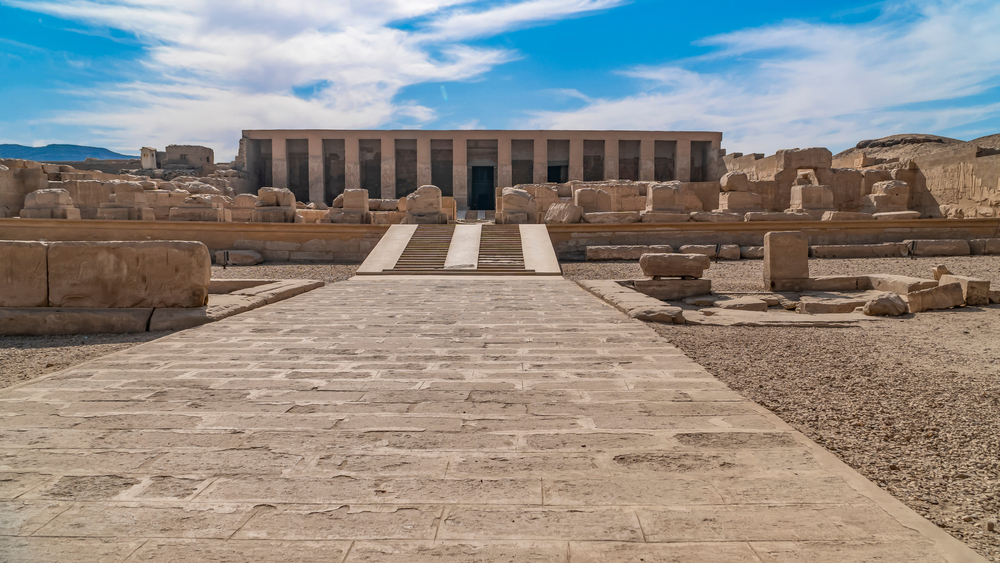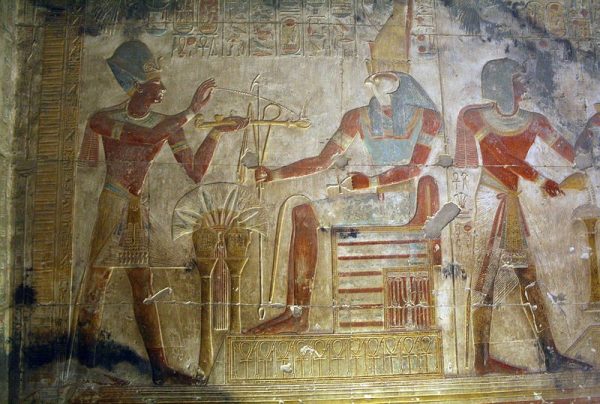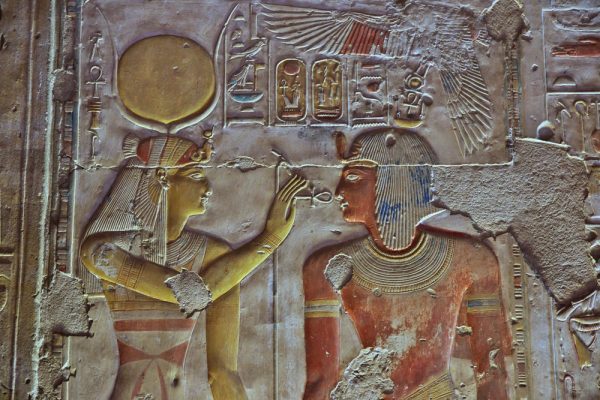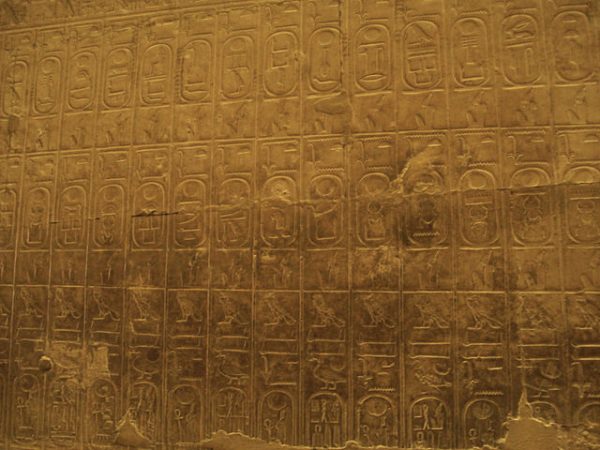The sacred city of Abydos
The sacred city of Abydos
The sacred city of Abydos
-
Hannah
-
Hannah

Abydos is an ancient city located in Upper Egypt, eleven kilometres west of the Nile, and covering around eight square kilometres.
The earliest settlement here dates back to 4000–3500 BC. It was here that the first pharaohs were entombed, in the Umm El Qaʻāb necropolis; the tomb of the pharaoh Narmer, for example, was discovered here, and he reigned from c. 3273–2987 BC.
Over time, more tombs were cut out and more temples built and expanded, including the Great Temple of Osiris, which made Abydos the centre of the cult of Osiris – it was believed that the god of the underworld was buried here. (According to UNESCO, ‘The Book of the Dead which called Abydos “the island of the Just” contains a specific formula “to enter Abydos and become part of the retinue of Osiris”.’) There was also a pyramid here, built as a cenotaph for the pharaoh Ahmose I.

Relief from the Temple of Osiris: Horus with a pharaoh
Today, Abydos is famous for its remarkably well-preserved remains: to visit here truly is to step back in time. Most of the structures we can see now date to the 19th and 20th dynasties of the pharaohs.
Key sites include the Umm El Qaʻāb necropolis and the small Temple of Ramesses II, but the draw at Abydos is the Temple of Seti I. This ‘House of Millions of Years’, as it was known, is the best-preserved structure at Abydos, and it really is the most amazing place to visit.
The temple was built as a memorial to the pharaoh Seti I, who reigned from c. 1294–1279 BC. (He was the father of Ramesses II, ‘Ramesses the Great’, a very popular and powerful king.)
The temple, constructed from limestone, is laid out in an L-shape. There are two courtyards; two large hypostyle halls (meaning the roof is supported by columns); seven sanctuaries honouring gods and Seti, which would have contained sacred barques; and other chapels. At the rear of the temple is the Osireion, which was built in the style of a Valley of the Kings tomb from the 18th Dynasty. It is thought that this was the tomb for ‘Osiris-Seti’, i.e. Seti as Osiris.
What makes the Temple of Seti I so famous is its many well-preserved reliefs and inscriptions. Some of the colours are astonishingly vivid still.

The goddess Isis offering life to Seti I
In the Gallery of the Kings, we find the Abydos King List. This has been invaluable to our understanding of Ancient Egypt, for it reveals the names of 76 kings. The chronological arrangement of cartouches begins with Menes, founder of the First Dynasty, and ends with Ramesses I, father of Seti I. Several pharaohs were omitted from the list, having been deemed illegitimate, Tutankhamun included.

The Abydos King List
Of all the ancient sites I have visited in Egypt – and I have been fortunate enough to visit many – Abydos is among the best. It is impossible not to be awed by the sense of history here. This is a place where the whispers of ancient people can be heard all around. This is a place that truly feels sacred.
Photo credits: 1) Merlin74/Shutterstock; 2) Steve F-E-Cameron/Wikipedia; 3) Sergey-73/Shutterstock; 4) isawnyu/Wikipedia.